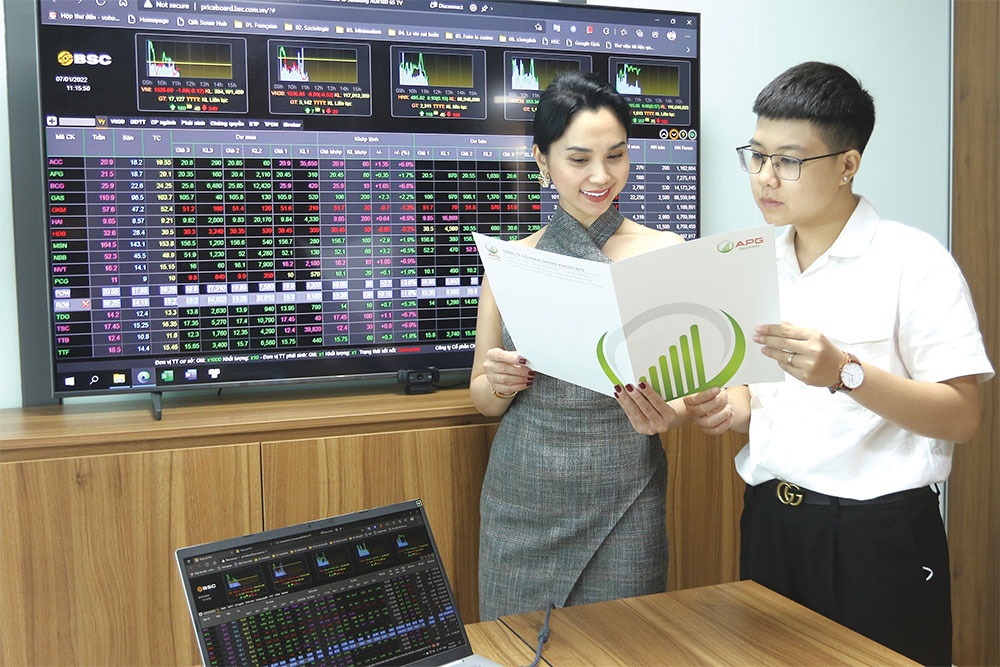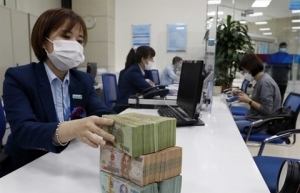Growing bond market illustrating bad debt snags
At a seminar on developing the bad debt market on November 29, organised by the State Bank of Vietnam (SBV), BIDV chief economist Dr. Can Van Luc emphasised the risks of the bad debt business.
 |
| The debt market requires more investors, valuation groups, and brokers, Le Toan |
According to Luc, in 2021 bank credit accounted for about half of the total capital supply for the economy, and it is expected that the credit role of the banking system in the next few decades will still be important. Therefore, debt management still needs annual capital to achieve international rates.
“The bond market recently has grown faster than the bank credit market, and reality has shown that certain risks exist. Combining these two markets to handle debt is an option,” Luc said.
The birth and development of the debt market will continue to contribute to the stability and financial safety of credit institutions and enterprise systems, according to Nguyen Kim Anh, Deputy Governor of the SBV.
“The market is where supply and demand meet. While this is not a specific location that can be concentrated or dispersed in order to create favourable conditions, having a centralised market makes it easier to trade, for any commodity in which debt is involved,” Anh said. “Therefore, the government and the SBV are aiming to form a centralised debt market with the Vietnam Asset Management Company (VAMC) as the core, thereby developing the market in a diversified and strong manner.”
Do Giang Nam, deputy general director of the VAMC, noted that in the past few years, Vietnam’s bad debt settlement market has seen some developments, especially in allowing the sale of bad debts to organisations. Accordingly, the proportion from this bad debt recovery measure has increased significantly, but is still modest compared to the totality. One of the reasons is related to the legal corridor.
“If the bottleneck of protecting investors’ interests is removed, there will be significant growth in bad debt settlement using this measure,” Nam said.
Nam noted that to develop a complete bad debt market and attract buyers, three specific conditions need to be met.
“Firstly, there needs to be a mechanism to attract a wide range of participants. In addition to the VAMC, the Vietnam Debt and Asset Trading Corporation, and credit institutions, the debt market must also attract domestic and foreign investors, valuation organisations, credit rating agencies, and brokers,” Nam said.
“The second condition is to build a technology platform to connect buyers and sellers and provide timely and transparent information. Thirdly, it is necessary to have a market-leading organisation with experience, financial potential, and the ability to connect market participants,” added Nam.
Domestic and foreign economic experts and leaders of the SBV all acknowledged that the Vietnamese debt market is basically still in its infancy, and needs to learn from other nations.
Sharing South Korea’s story, Choe Sun Joon, head of International Business at the Korea Asset Management Corporation, explained that implementing the securitisation of bad debts after the 1997 foreign exchange crisis in South Korea led to a sharp increase in the volume of bad debts.
“The requirement was to have a new financial technical tool to quickly handle this volume of bad debt. Besides the need for financing due to the decrease in demand for corporate bonds and loans in the market, businesses need more funding channels for new capital,” said Joon. “Agents discuss the securitisation structure and schedule of securities issuance or develop securitisation contracts, including deposit contracts, asset management contracts, and asset transfer contracts.”
For the sale of bad debt to be effective, Karlis Bauze, senior financial specialist of the World Bank, said it is necessary to satisfy various conditions, including the legal framework on creditor’s rights, information disclosure, good performance in valuation and accounting, a favourable tax regime, investors being familiar with the use of electronic trading platforms, and more besides.
“A debt trading platform is only a tool and only works effectively when there is a strong enough infrastructure to attract and encourage investors. It is necessary to have an extremely favourable environment for online debt trading platforms to operate optimally. Having a strong creditor determination mechanism ensures fairness and consistency for all investors,” Bauze said.
 | Message from government about resolving corporate bond issue The Government has issued Resolution 143/NQ-CP of its regular meeting in October. |
 | Large bond investment funds' NAV hit three-year low The Vietnamese financial market has experienced a bumpy road since the beginning of 2022 due to violations in the issuance and trading of corporate bonds of large corporations such as Tan Hoang Minh and Van Thinh Phat. The confidence of investors is at such a low level that many are willing to sell corporate bonds at any cost to collect money at a high discount. |
What the stars mean:
★ Poor ★ ★ Promising ★★★ Good ★★★★ Very good ★★★★★ Exceptional
 Tag:
Tag:
Related Contents
Latest News
More News
- Tax sector wraps up 2025 and sets priorities for next year (December 25, 2025 | 14:00)
- A tipping point for digital and hybrid wealth management in Vietnam (December 23, 2025 | 13:33)
- $250 million deal targets women-owned SMEs, sustainable agriculture (December 22, 2025 | 17:40)
- Stock market posts resilient 2025 performance (December 19, 2025 | 18:17)
- Citi Vietnam receives 2025 AmCham CSR recognition (December 19, 2025 | 16:35)
- As global green supply chain reshapes, will Vietnam be left behind? (December 19, 2025 | 08:00)
- Banks gear up for massive capital increases (December 18, 2025 | 17:04)
- Securing capital and efficiency for Vietnam’s 2026-2030 growth ambitions (December 17, 2025 | 10:00)
- Energy sector in need of blended finance mechanisms (December 17, 2025 | 09:00)
- Vietnam still has room to mobilise capital for sustainable growth (December 17, 2025 | 08:57)























 Mobile Version
Mobile Version